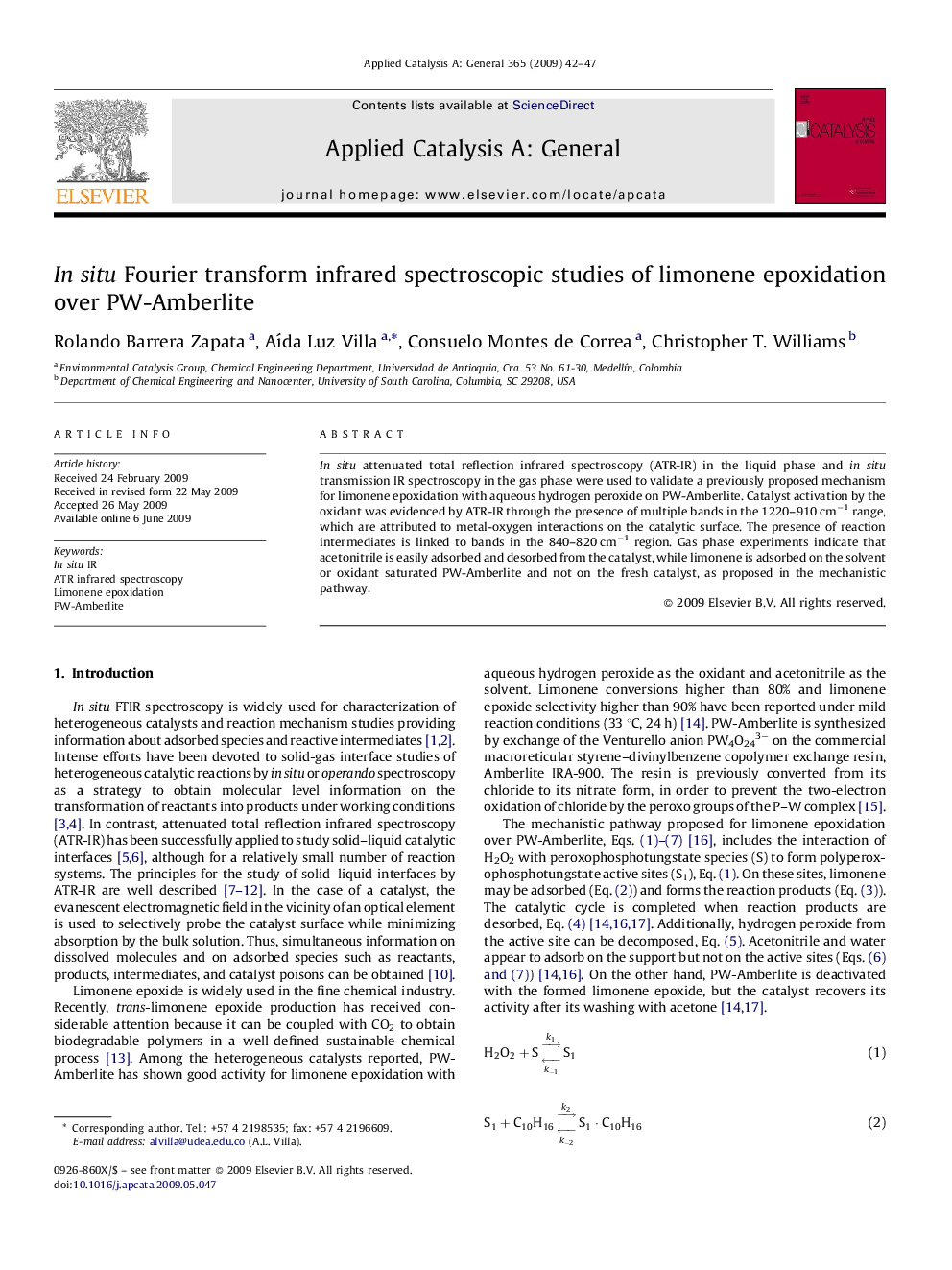| Article ID | Journal | Published Year | Pages | File Type |
|---|---|---|---|---|
| 42605 | Applied Catalysis A: General | 2009 | 6 Pages |
In situ attenuated total reflection infrared spectroscopy (ATR-IR) in the liquid phase and in situ transmission IR spectroscopy in the gas phase were used to validate a previously proposed mechanism for limonene epoxidation with aqueous hydrogen peroxide on PW-Amberlite. Catalyst activation by the oxidant was evidenced by ATR-IR through the presence of multiple bands in the 1220–910 cm−1 range, which are attributed to metal-oxygen interactions on the catalytic surface. The presence of reaction intermediates is linked to bands in the 840–820 cm−1 region. Gas phase experiments indicate that acetonitrile is easily adsorbed and desorbed from the catalyst, while limonene is adsorbed on the solvent or oxidant saturated PW-Amberlite and not on the fresh catalyst, as proposed in the mechanistic pathway.
Graphical abstractIn situ attenuated total reflection infrared spectroscopy (ATR-IR) in the liquid phase and in situ transmission IR spectroscopy in the gas phase were used to validate a previously proposed mechanism for limonene epoxidation with aqueous hydrogen peroxide over PW-Amberlite. Catalyst activation by the oxidant and the presence of reaction intermediates was evidenced by ATR-IR. Acetonitrile and limonene adsorption was determined by gas phase experiments.Figure optionsDownload full-size imageDownload as PowerPoint slide
